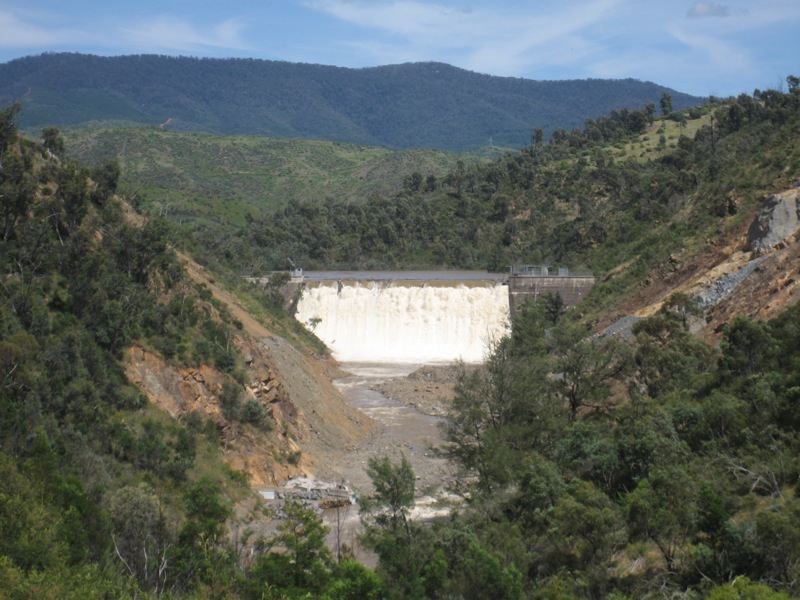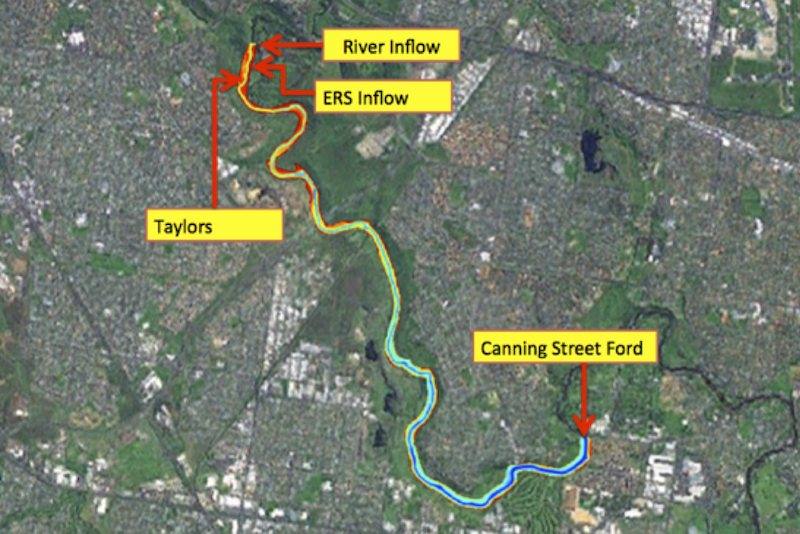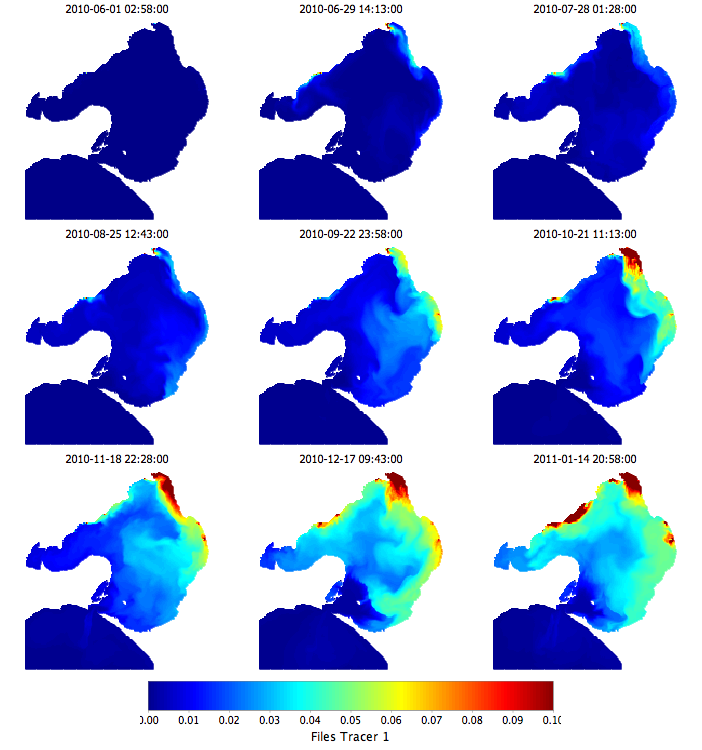Projects
Modelling Dissolved Oxygen Dynamics in the Enlarged Cotter Reservoir
The Enlarged Cotter Dam project was undertaken to increase the security of potable water supply to the ACT. Hydronumerics was contracted by ACTEW Corporation to undertake numerical modelling to deliver a quantitative prediction of water quality conditions during and after filling of the enlarged dam. As part of the project ELCOM- CAEDYM was modified to allow for spatially varying sediment oxygen depletion rates. The validated ELCOM-CAEDYM model was used to assess potential operational scenarios and to investigate strategies for maintaining acceptable oxygen concentrations. Strategies modelled included staged filling rates, the use of artificial mixing devices and the removal of vegetation prior to inundation.

Modelling The Fate And Transport Of Sewage Discharge In Maribyrnong River, Victoria
Hydronumerics was commissioned to assess the likely impacts on human and riverine health resulting from wet weather sewage discharges from the Emergency Relief Structure (ERS) at Brimbank Park. The three-dimensional hydrodynamic model ELCOM (Estuaries, Lake and Coastal Ocean Model) was applied to a discrete section of the Maribyrnong River (Victoria) downstream of Brimbank Park ERS.
The model was used to assess the transport and fate of ERS discharge in the river, to compare the composition of ERS discharge against inflows from Maribyrnong River and Taylors Creek, and to assess the percentage composition of ERS discharge into major recreational areas downstream of Canning St Ford. Under baseline conditions, modelling shows that the river can achieve a 1:1100 natural dilution of ERS discharge, suggesting that there is some buffer to public health impacts afforded by the natural riverine inflows. A series of catchment-wetness and riverine flow scenarios were also examined to determine the river health under worst case scenario.

Port Phillip Bay Environmental Management Plan
Hydronumerics delivered ecosystem modelling services for Port Phillip Bay, Victoria, to forecast future changes to water clarity, quality and productivity in response to projections of urban growth, climate change and waste water treatment to 2050. We coupled our bay model to an eWater Source Catchments model developed by Jacobs to quantify the impacts of a range of catchment management scenarios that guided input load target setting for the Environmental Management Plan.
